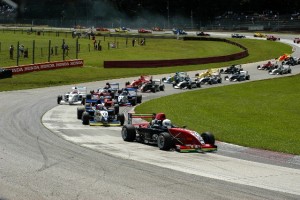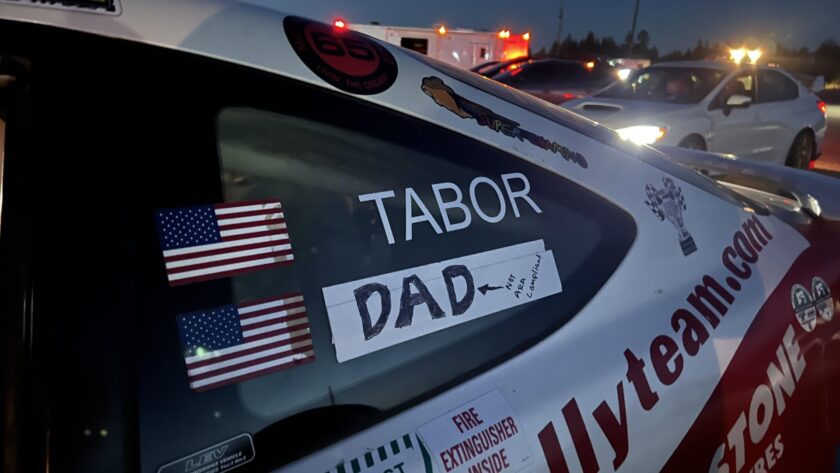Ok, I know the new Pro Mazda Championship Presented by Cooper Tires is barely a week old, but given who has taken over the old Star Mazda series, I’m willing to offer some speculation on how the new series will evolve over the next few seasons. All of my speculation hinges upon observations of how Dan Andersen and his company Andersen Promotions have managed the Cooper Tires Presents the USF2000 Championship Powered by Mazda over the past few seasons. This is a long article, so bear with me as I lay the groundwork for my thoughts on the future of the series in three parts, and forgive me for being a bit Dickens-esque. Today, we’ll look at the Spirit of Star Mazda Past and delve into the history of what made the series so strong through the 90’s and early 2000’s, and why it all went wrong in recent years. Tomorrow, we will see the Spirit of USF2000 Present to gain insight as to how Dan Andersen’s group has grown such a strong series in so short amount of time. Lastly, on Monday, we will look at the Spirit of Pro Mazda Future, taking lessons learned from the past Star Mazda series and the present USF2000 series and making some educated guesses as to what we will see from the Pro Mazda series in the seasons to come.
The Rise and Fall of the Star Mazda Championship
The machine that would eventually evolved into today’s Star Mazda race car began as a tube-frame, Mazda-powered car for the Jim Russell Racing School built by the Japanese speed shop Hayashi Racing back in 1983. Throughout the 80’s, several regional series based on the Jim Russell formula enjoyed success, but success of a national series didn’t come until the late 90’s. Gary Rodrigues formulated a plan for the creation of the Star Mazda Series with the first race cars rolling off the line in the fall of 1990. The first official Star Mazda season was in 1991 using the RX-7 rotory engine, but the newly created Star Mazda Series crowned regional, divisional, and oval champions. There was no unified national series until 1999 when Dr. Panoz formed the American Le Mans Series and incorporated Star Mazda as support series.
The formula for Star Mazda has remained relatively unchanged since it’s inception. The notable changes have been a change to the Mazda Renesis engine, the same two-rotor motor used in the RX-8, and the chassis is now a modern carbon fiber monocoque as opposed to the original tube-frame design.  The power and performance have remained relatively unchanged throughout the years offering a step above the various Formula Ford and F2000 specs, yet below the Toyota Atlantic and Indy Lights cars. What have changed significantly over the years are the grid sizes and the sanctioning bodies.
The power and performance have remained relatively unchanged throughout the years offering a step above the various Formula Ford and F2000 specs, yet below the Toyota Atlantic and Indy Lights cars. What have changed significantly over the years are the grid sizes and the sanctioning bodies.
That first year of national-level racing saw grid sizes in the 30s. That grew to car counts in the 40s for many of the races in the 2000 season. The Star Mazda formula was proving affordable and competitive. The series continued enjoying success under IMSA sanctioning throughout the early 2000’s supporting both ALMS and CART/CCWS. Things started to decline beginning in 2007, the first year that the series didn’t routinely field 30+ cars on a race weekend. Ironically, this was also the first year of a scholarship program from Mazda to promote the series champion to the next level on the MAZDASPEED Motorsports Development Ladder.
When the Champ Car World Series folded up shop and merged with INDYCAR in 2008, the Atlantic Championship ended up being a dead-end series. The Atlantic Championship was the next series in the Mazda development ladder system and immediately made the Star Mazda Championship a let attractive prospect for teams and drivers. The car counts immediately reflected this change in attitude as the series failed to attract 30+ cars for the first time at Sebring. The rest of the season saw car counts in the mid-20s on average, and 2009 saw the same.
no images were found
In 2010, the Star Mazda Championship joined USF2000 and Indy Lights to form the Road to Indy ladder system, and the series was again part of a clearly delineated progression to the highest form of open-wheel racing in North America. This meant leaving IMSA and having INDYCAR serve as it’s sanctioning body beginning in 2011. Unfortunately, being part of the Mazda Road to Indy came too late as the car counts in Star Mazda continued to dwindle. The 2010 grids were in the low-20’s and high-teens most races, and 2011 didn’t get any better. The series never saw a 20+ grid in 2011 with most races drawing low-teens. The participation rebounded slightly in 2012, but only marginally, and for the series it was too little too late. The official announcement that Rodrigues had sold the series came on December 14th this year.Tomorrow we will look at the present and see how Anderson Promotions has grown the Cooper Tires Presents the USF2000 Championship Powered by Mazda from single-digit fields to having an average of 30 cars on grid for the 2012 road course events.




